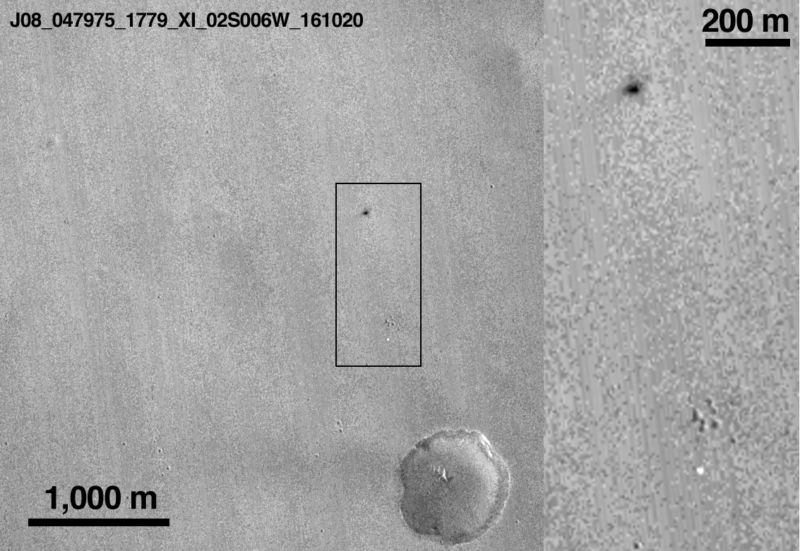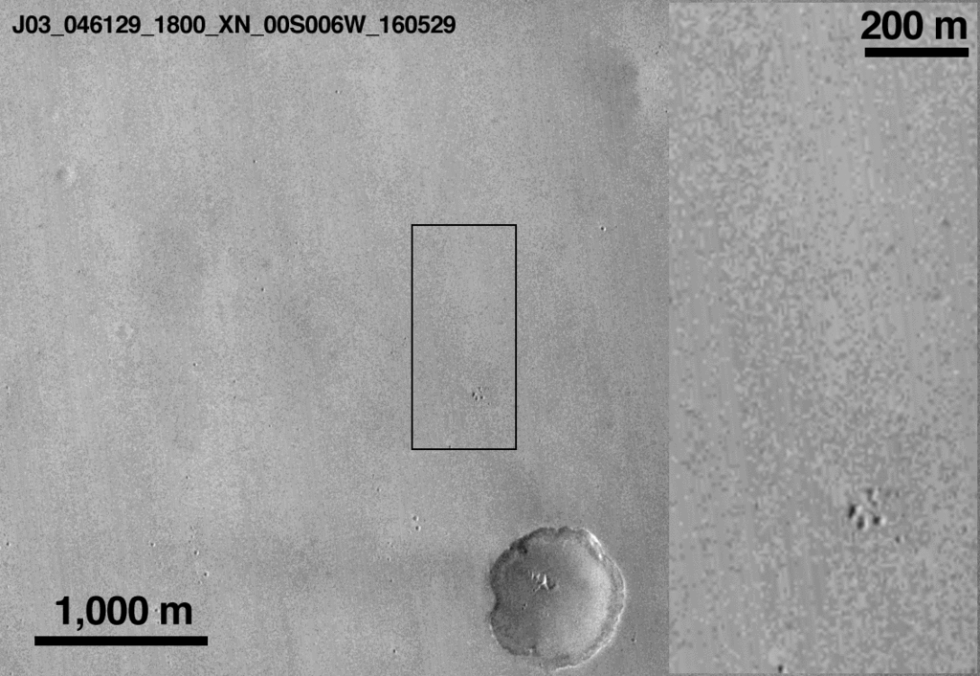
NASA's sharp-eyed Mars Reconnaissance Orbiter has found the site where Europe's Schiaparelli lander crashed into the red planet on Wednesday. The orbiting spacecraft's Context Camera compared images of the Meridiani Planum area near the equator; they were taken on May 29, 2016 and October 20, 2016. The camera found evidence of both the lander and its parachute.
In the image taken Thursday, a larger dark spot, estimated to measure about 15 by 40 meters, appears to show where the lander struck the surface and exposed darker ground below. Lending further credence to the likelihood of this being Schiaparelli's final resting place is that this site is located about 5.4km west of the center of the European Space Agency's intended landing target. The spacecraft's heat shield, jettisoned before landing, probably would not have made such a large impact. A smaller, bright spot near the lower edge of the enlarged image is likely the lander's parachute.
With the location of the crash landing now pinpointed, the NASA orbiter can aim its High Resolution Imaging Science Experiment camera (the most powerful camera ever sent beyond low-Earth orbit) to capture detailed images of the location. This could further help ESA understand the sequence of events that led to a loss of communication from the lander.
ESA has been careful to note that the most important part of its ExoMars mission, the Trace Gas Orbiter, is alive and well in space and ready to begin its mission of sniffing out methane and other trace gases in the planet's tenuous atmosphere. However, the Schiaparelli lander was supposed to provide Europe with confidence that a future mission to the surface, including a rover, could get down to Mars safely.

After Wednesday, that is now in doubt. ESA lost contact with Schiaparelli about one minute before the lander was to reach the surface. A preliminary analysis found that Schiaparelli jettisoned its parachute earlier than expected and that the retrorockets meant to fire for about 30 seconds to slow the craft's descent only fired for three or four seconds. The cause of these two problems is not yet clear, so additional details from satellite images could help the investigation.
reader comments
170